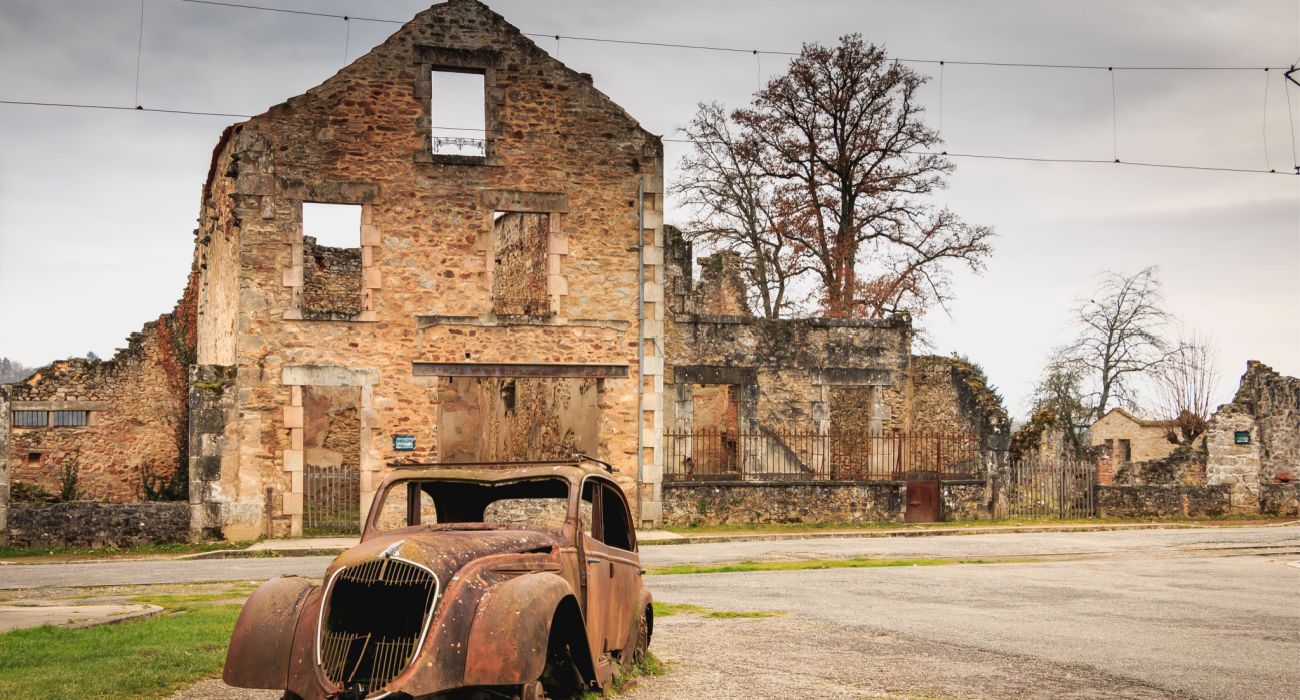Quick Links
Ghost towns fascinate people all around the world. Perhaps it's the mystery of what once was, or perhaps it's the post-apocalyptic nature of the ghost towns that capture people's imagination (much like post-apocalyptic movies like Will Smith's I Am Legend). While many American ghost towns are mining boom towns of the Old West or old coal mining towns of the Appalachians, Oradour-Sur-Glane in France has a much more sinister story.
Oradour-Sur-Glane is a memorial for the French in Normandy for the atrocities committed in the country by the Nazis. Today many Americans, British, and Canadians go to Normandy to see the many memorial sites of the D-Day landings, and Oradour-Sur-Glane should be high on anyone's itinerary. There are plenty of museums of the decisive operation of the war at Normandy today.
The Dark Story Of The D-Day Landings To Remember
The Allies stormed the Normandy Beaches on 6 June 1944 to liberate France and Europe from the Nazis. The operation was one of the most momentous and consequential days of the war. It greatly shaped American, British, and Canadian remembrance of WW2 and overshadows many other major operations. Today there are many museums, memorials, and war cemeteries in the area dedicated to the event.
But four days after the landings, the wrath of the collapsing Germans was metered out on the innocent people of France.
Oradour-Sur-Glane was once a thriving area, but today the village stands abandoned as a powerful reminder of what happened. The village's empty buildings and streets (and even cars) are a testament to the horrors of war. For over 75 years, they have been left for nature to reclaim.
Now tour of the D-Day Landings could be complete without learning about the tails of the French caught up in the conflict.
The Massacre & Razing Of Oradour-Sur-Glane
Oradour-Sur-Glane was a sleepy market town, but on 10 June 1944, the population of the Limousin market town was massacred by around 200 Waffen SS. It was but one of many crimes inflicted on France during the occupation. The village was pillaged and burned. The crimes committed are too much to detail here, but can be read on Haute-Vienne Tourisme.
- Date: June 10, 1944
- Perpetrators: Der Führer Regiment Of The 2nd Waffen SS Panzer Division
- Victims: 642
When the Waffen SS left the village, they left the village in ruins, and with its once happy inhabitants massacred (very few survived). No one was spared, and there was no pity.
After the liberation of France, the Free French wartime leader-come president Charles De Gaulle decided to leave Oradour-Sur-Glane as a memorial to Nazi cruelty. There is no universally accepted explanation for why the Waffen SS did this.
Few memorials can be as powerful as Oradour-Sur-Glane to show why the Allied landings and the overthrow of the Reich were necessary.
Plan A Visit To Oradour-Sur-Glane & Add It To A D-Day Landings Tour
Today Oradour-Sur-Glane should be part of any tour of Normandy and the beach landings. It is a reminder that it wasn't just Allied soldiers paying the ultimate sacrifice in the cause of freedom and justice, it was also the French civilians caught in the crossfire (and even deliberately targeted by the Nazis).
The closest city is Limoges, around 20 kilometers away (the site has free parking). People can also visit the Oradour-Sur-Glane by bus for a couple of Euros on bus Ligne 12 (although it only runs 2-3 times daily). The site has a visitor center - the Centre de la mémoire d’Oradour.
- Admission Fee: Free
- Operating Hours: 9 am to 5 pm - 7 pm (Depending On the Season)
- Days Open: 7 Days, Year Round
Ready oneself before visiting, the stories one will learn about here are heavy; this will not be a joyous day.
On a brighter note, Normandy is a stunning region of France with plenty of places to see and explore - including the Le Mont Saint Michel - the medieval “Wonder of the West” in France.
It is important to remember the dark days of the past in order to understand the world today and to ensure those wrongs are never repeated. There are significant places to visit all around the world - from the Trail of Tears in the United States to the death camp of Auschwitz (the ultimate somber experience).

